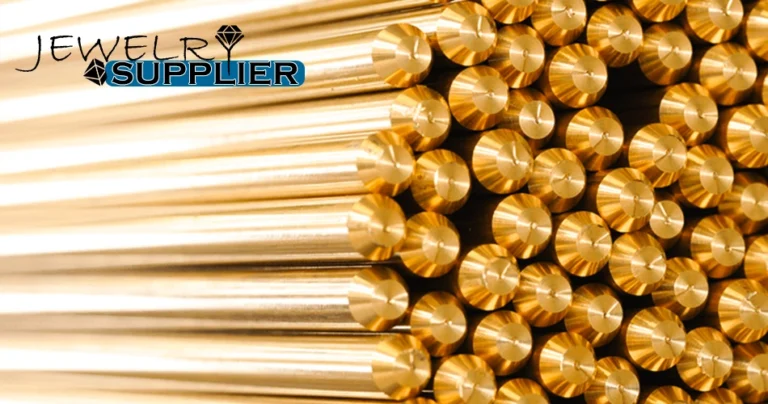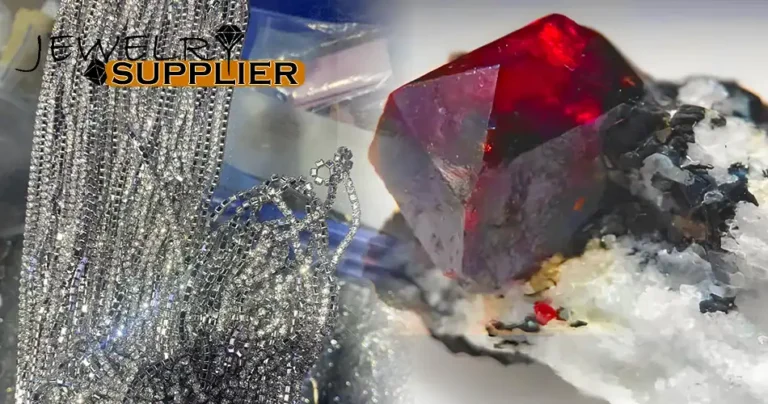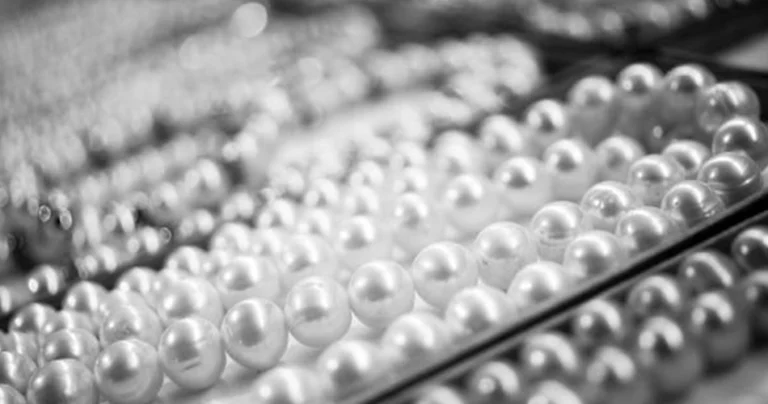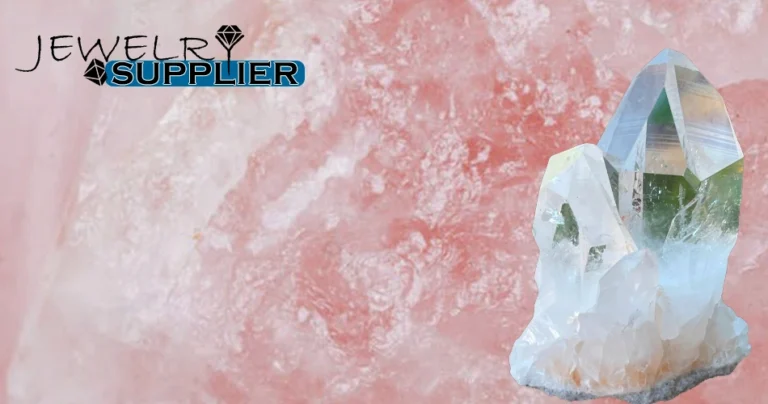Titanium Alloy
Titanium alloy is a metallic material primarily composed of titanium, also known as pure titanium and titanium alloy. This silver-white transition metal is characterized by its lightweight, high strength, metallic luster, and resistance to corrosive wet chlorine. Titanium alloy can enhance its high strength, corrosion resistance, and high-temperature resistance by incorporating other elements, making it a favored choice for manufacturing high-strength components.
The biocompatibility of titanium alloy allows for its application in the biomedical field, such as in dental implants, artificial joint replacements, and orthopedic implants. The low thermal conductivity of titanium alloys is primarily achieved through methods like alloying, surface modification, composite materials, heat treatment, powder metallurgy, and the development of new titanium alloys.
Due to its unique properties, titanium alloy has found extensive use in the jewelry sector. Jewelry suppliers use titanium alloy materials to forge metal jewelry, paired with various colored gemstones, making it an attractive choice. The lightweight and durable nature of titanium alloy provides designers with the opportunity to create complex yet airy jewelry pieces at an affordable price. This versatility in design and functionality has solidified titanium alloy’s status as a popular choice in modern jewelry collections.
Density of Titanium Alloy
The density of titanium alloy typically hovers around 4.51 g/cm³, making it approximately 60% lighter than steel. While pure titanium has a density comparable to that of conventional steel, certain high-strength titanium alloys exceed the strength of various structural steels.
Thanks to its impressive strength-to-density ratio, titanium alloy is extensively utilized in the production of lightweight yet rigid components, such as engine parts, airframes, fasteners, and landing gear in the aerospace industry. This remarkable combination of low density and high strength makes titanium alloy an ideal choice for applications where weight reduction is critical without compromising structural integrity.
Biocompatibility of Titanium Alloy
Titanium alloy is widely used in the biomedical field due to its excellent corrosion resistance, low elastic modulus, mechanical properties, and outstanding biocompatibility. Applications include prosthetic implants, artificial joints, functional replacement materials, dental implants, and medical devices.
In terms of biocompatibility, titanium alloy exhibits low toxicity and high corrosion resistance. Compared to materials like stainless steel and cobalt-chromium alloys, titanium alloy aligns more closely with human bone, offering superior bonding capabilities. Its elastic modulus is similar to that of bone, which helps mitigate the stress shielding effect that can occur between the implanted prosthesis and surrounding bone tissue.
Furthermore, titanium alloy benefits from surface modification techniques such as laser surface treatment, physical modification, arc melting processing, and chemical modification. These methods enhance its mechanical properties, hardness, wear resistance, and corrosion resistance by altering its composition, surface treatments, or applying protective coatings. This also reduces biotoxicity and improves the antibacterial properties of titanium alloy, preventing subsequent issues arising from damage to the surface structure.
Additionally, these treatments impart bioactivity to titanium and titanium alloy implants, promoting the adhesion and proliferation of human tissue cells around the implant. This significantly enhances the biocompatibility of titanium alloy implants, allowing their surfaces to possess antibacterial and antimicrobial properties. The diverse surface treatment technologies available for titanium alloy can be tailored to meet specific application needs, optimizing performance and extending service life.
Data sheet of commonly used raw materials for jewelry
Low Thermal Conductivity Technology of Titanium Alloy
The low thermal conductivity technology of titanium alloy plays a crucial role in applications where heat insulation or control of heat transfer is necessary. By reducing heat loss, this technology enhances system thermal efficiency. In the medical field, the low thermal conductivity of titanium alloy helps minimize rejection reactions, improves biocompatibility, and reduces thermal stress on materials used in medical devices and artificial prosthesis implants, thereby extending their lifespan.
The low thermal conductivity of titanium alloy is achieved through several methods
1.Alloying:Titanium alloy’s thermal properties can be improved by adding specific alloying elements such as aluminum, manganese, chromium, iron, carbon, copper, and nickel. For example, incorporating nickel-coated multi-walled carbon nanotubes can enhance the thermal conductivity of titanium alloy.
2.Surface Modification:Techniques such as ion implantation can introduce different elements into the surface of titanium alloy, potentially improving its overall surface performance, which may indirectly affect its thermal conductivity.
3.Composite Materials:Combining titanium alloy with other materials that exhibit high thermal conductivity, such as diamond or copper composites, can reduce interfacial thermal resistance and improve the overall thermal conductivity of the composite material.
4.Heat Treatment:The heat treatment methods applied to titanium alloy can significantly influence its microstructure and phase transformation, which in turn affects its thermal conductivity. Heat treatment primarily enhances the α+β titanium alloys, as pure α-type titanium does not effectively respond to heat treatment. It is essential to avoid the formation of the ω phase during heat treatment, as this can make titanium alloy brittle. Choosing an accurate aging process, such as using higher aging temperatures, can facilitate the decomposition of the ω phase.
5.Powder Metallurgy:Utilizing powder metallurgy techniques to manufacture titanium alloy can optimize its microstructure, resulting in improved thermal conductivity.
6.Development of New Titanium Alloys:Creating new high-temperature titanium alloys with excellent mechanical properties can lead to advancements in thermal conductivity. These improved alloys may exhibit unique thermal characteristics that enhance their performance in various applications.
Development Prospects of Titanium Alloy Jewelry
Thanks to its unique characteristics,Titanium Alloyperforms exceptionally well not only in the aerospace and medical fields but is also gaining popularity in the jewelry industry. Jewelry made from Titanium Alloy stands out for its blend of durability, lightweight nature, and stylish appeal, making it a top choice for modern consumers. Let’s explore whyTitanium Alloyjewelry has a bright future:
1.High Strength and Wear Resistance:Titanium Alloy’s strength and excellent wear resistance make it ideal for crafting jewelry that resists deformation and damage, especially for items like pierced earrings and rings.
2.Color Versatility:Titanium Alloy can achieve a variety of colors through anodizing techniques, offering shades like vibrant gold, deep brown, electric blue, and royal purple—without the need for external additives. This provides jewelry custom with a wider color palette and more creative possibilities in their designs.
3.3D Printing Technology:The use of 3D printing allows for unparalleled flexibility in Titanium Alloy jewelry design, enabling the creation of complex structures that cater to the growing demand for personalized, bespoke pieces.
4.Material Innovation:By combining Titanium Alloy with materials like ceramics, jewelry can attain a new level of tactile experience and visual intrigue, blending sleek metallic finishes with refined, high-end textures.
5.Eco-Friendly and Hypoallergenic:With its superior biocompatibility, Titanium Alloy is an ideal option for those with metal allergies. Its resistance to corrosion ensures long-lasting shine, aligning with the modern consumer’s focus on sustainable and health-conscious choices.
6.Lightweight, Durable, and Cost-Effective:Titanium Alloy has a low density, making it significantly lighter than traditional precious metals while maintaining high hardness. This enables the design of intricate yet lightweight pieces, and it often comes at a more affordable price point compared to other high-quality metal options.
7.Market Potential:The exceptional properties of Titanium Alloy indicate significant potential for growth in the jewelry market. The global Titanium Alloy market is projected to expand steadily, signaling a strong future for this versatile material in fine jewelry.
Titanium Alloy Surface Treatment
Surface treatment techniques forTitanium Alloyare crucial for enhancing its performance and extending its lifespan. By employing various surface treatments, the wear resistance and corrosion resistance of Titanium Alloy can be significantly improved, making it suitable for use in diverse environments. Some of the most common surface treatment techniques include:
1.Electroplating:Adding a metal coating like nickel or chromium to the surface of Titanium Alloy enhances its wear resistance and provides a visually appealing finish.
2.Laser Surface Treatment:High-energy laser beams can alter the surface properties of Titanium Alloy, increasing hardness and improving its resistance to abrasion.
3.Anodic Oxidation:This electrochemical process creates a protective oxide layer on the surface of Titanium Alloy, which not only improves its wear resistance and anti-corrosion properties but also enhances its decorative appeal.
4.Diffusion Coating:By utilizing high-temperature diffusion, alloy layers can be formed on the Titanium Alloy surface, altering its hardness and surface wear resistance.
The versatility of Titanium Alloy’s surface treatment options makes it adaptable for various applications, allowing designers to optimize it for specific needs, whether for jewelry, aerospace, or medical uses.







